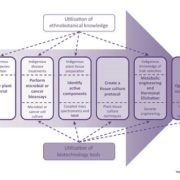
Ethnophytotechnology: Harnessing the power of ethnobotany with biotechnology ($)
Blog, Plant Science Research Weekly, Research, Research Blog0 Comments
/
De la Parra and Quave describe the fascinating intersection of ethnobotany and biotechnology, which they define as ethnophytotechnology: “the use of plant biotechnology to improve or enhance the inherent economic or culturally valuable traits of plants as described and influenced by ethnobotany". They…

Forum: Carbon concentration in algae: Reducing CO2 from exhaust gas ($)
Blog, Plant Science Research Weekly, Research, Research BlogElectricity-generating power plant produce CO2, and industrial and household waste water contains inorganic nutrients that can pollute waterways. What if both of these pollutants could be put to good use, for example in a growth medium for biofuel-producing algae? Ghosh and Kirin describe the feasibility…
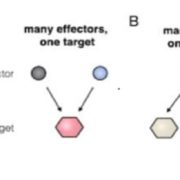
Review: Lessons in effector and NLR biology of plant-microbe systems
Blog, Plant Science Research Weekly, Research, Research BlogTwo of the key players in the plant-pathogen interaction are the effectors produced by pathogens (that “modulate plant physiology to favor host infection and colonization”) and the plant immune receptors (including NLR proteins: nucleotide-binding domain and leucine-rich repeatcontaining) that are…
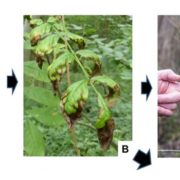
Ash dieback epidemic in Europe: How can molecular technologies help?
Blog, Plant Science Research Weekly, Research, Research BlogThe fungal pathogen Hymenoscyphus fraxineus that infects European ash (Fraxinus excelsior) has caused a huge epidemic and cost millions of trees their lives. Downie describes the employment of molecular techniques to trace the origin of the fungus in Europe, and describes how the fungal life cycle…
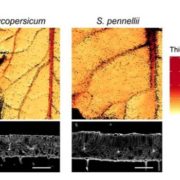
Genetic architecture and molecular networks underlying leaf thickness in desert-adapted tomato
Blog, Plant Science Research Weekly, Research, Research BlogPlants with thicker leaves are better able to retain water and deal with water-limiting conditions. Coneva et al. explored the genetic basis for leaf thickness by comparing introgression lines of cultivated tomato (Solanum lycopersicum) and a species adapted to the desert (Solanum pennillii). They found…
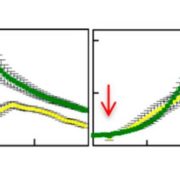
Aquaporins facilitate hydrogen peroxide entry into guard cells to mediate ABA- and pathogen-triggered stomatal closure ($)
Blog, Plant Science Research Weekly, Research, Research BlogGuard cells are crucial gatekeepers that control entry and exit of gases, water vapor, and pathogens. Rapid stomatal pore closure in response to pathogen perception or the hormone abscisic acid (ABA) is supported by activation of the aquaporin (water channel) PIP2;1. Rodrigues et al. investigated the…

Phloem loading through plasmodesmata: a biophysical analysis
Blog, Plant Science Research Weekly, Research, Research BlogSugars produced in photosynthetically active mesophyll cells move into the phloem through a process known as phloem loading, but not all plants phloem load the same way. Some use a passive process in which sugars move down a concentration gradient into the phloem, but others use active transport processes.…
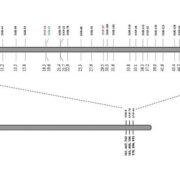
Rgsr8.1, a new quantitative trait locus conferring resistance to Gibberella stalk rot in maize
Blog, Plant Science Research Weekly, Research, Research BlogGibberella stalk rot (GSR) is a fungal disease of maize. Through QTL-seq, a whole genome sequencing method, Chen et al. identified a new resistance quantitative trait locus (QTL) Rgsr8.1 that confers broad-spectrum resistance to GSR. Two candidate genes were identified, one encoding an auxin response…
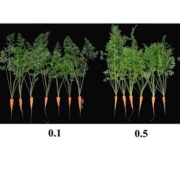
Brassinosteroid accumulation and effect during carrot development
Blog, Plant Science Research Weekly, Research, Research BlogBrassinosteroid hormones (BRs) play significant roles in plant growth and development. Que et al. examined BR accumulation and the expression of genes involved in the biosynthesis, signalling and catabolism of BRs in carrot (Daucus carota), a phytonutrient-rich crop. A key finding is the increase in…

